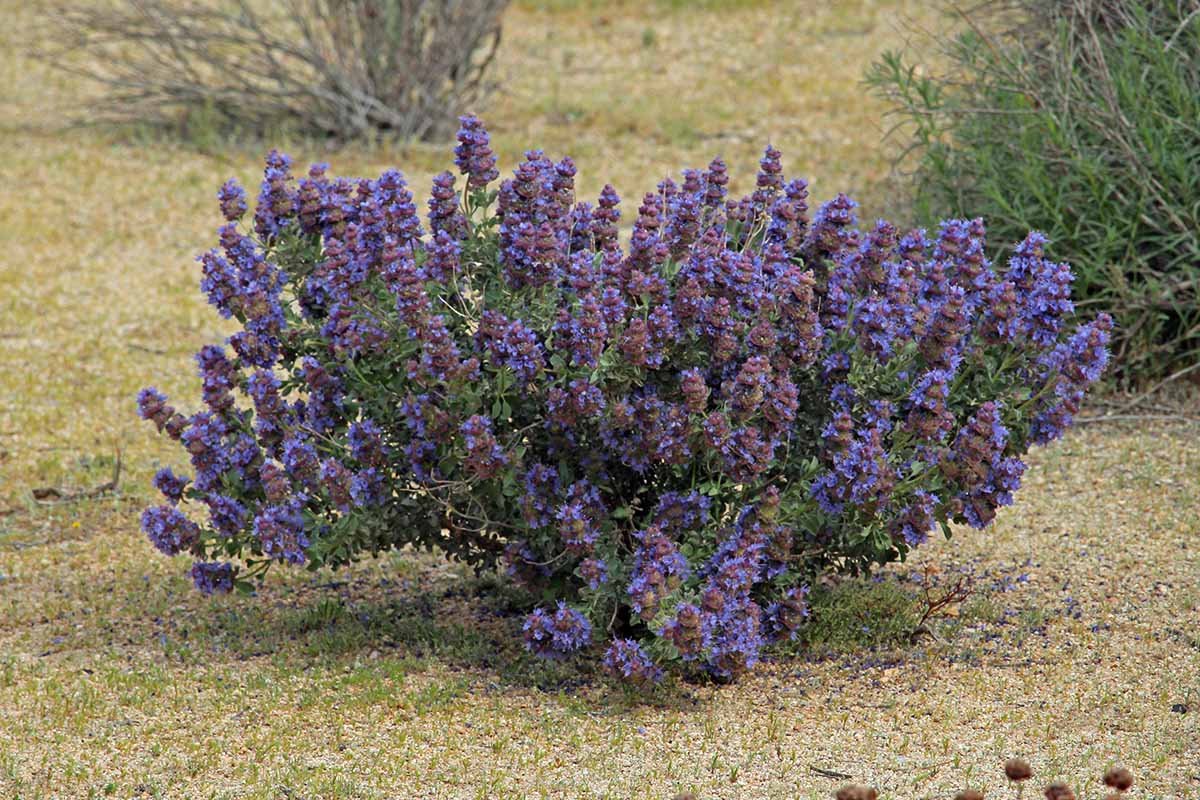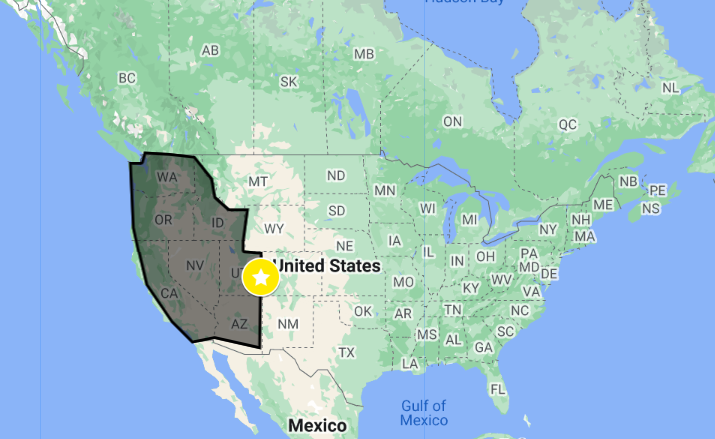Finding Dorrii
Dorr’s Sage (Salvia Dorrii)
Since I was a child, I have enjoyed a passion for cacti and succulents, so I figured there was no better place than the desert to look for and admire one. Familiar with only a few common names of popular garden species, I hoped to find a specimen that I could elaborate on, to further grow my passion into something more articulate.
Aimlessly wandering in the sun, looking for a cactus of sorts to study, I walk across the red, water-deprived soil, in search of something of interest. A tiny, evenly geometrically stacked sage green and teal-colored, succulent-looking plant meets my eye, tucked behind a taller thin grass. First using the phone application Picture This, I came to an incomplete conclusion that the unidentified plant was indeed not of the succulent variety but was Texas Sage, as I apparently believe everything that my phone tells me. I show Mary my find, but she is perplexed by such a name, as it was never purposefully planted in a yard that is meant to host native pollinator habitat. Texas Sage. We are standing in Utah. Obviously, I thought to myself, this could not be a plant indigenous to this land. My mystery sage is eventually determined to be Salvia dorrii, or Dorr’s Sage, courtesy of the passionate plant-identifier Mimi, who has grown it for years down the sun beaten road at her house in the beautiful Castle Valley.
This woody perennial subshrub, native to both the Columbia and Great Basin, Mojave Desert, northwestern Arizona, is also historically found in southern Utah, given its drought tolerance and need for well-drained soils. A hardy plant, Dorrii can live at low to high elevations, in some areas that may receive as little as a foot of precipitation annually. Yet the plant I am looking down at, compared to what I read off the internet, is a tiny little shrub, struggling to squeeze out of the local rocky soil, already sandwiched four ways in-between larger and more developed plants.
I bend down to one knee and slouch over to better study this peculiar specimen. Dorrii’s toenail sized leaves stem out of the numerous rough, yet delicate branches with each leaf opposite the other and consisting of a color spun from a delicate green and teal, resulting in a silver hue. Forming a spiral-like pattern, the small oval shaped leaves take on the curvature physique of a downward sloping, folded human tongue. The base of the plant, the woodiest portion, tapers outwards into several branches, which grow wide rather than tall, reaching sideways, sprawling up to five feet, and stretching skywards about the length of a baseball bat.
When in bloom, it forms purple, nugget-like spike clusters that harbor delicate, violet hued, bilaterally symmetrical flowers, like the shape of a butterfly. A part of the sixth largest angiosperm family, Lamiaceae, also known to be the Mint or Salvia family, Dorrii sits in a group of other salvias, many of which are known for their aromatics. Some family members include oregano, rosemary, mint, thyme and even lavender, all known for their distinctive aromatic qualities utilized in both culinary settings and medicine. They too boast flowers that take the form of an elegant, tiny butterfly. Dorrii itself emits a pleasant but pungent scent to deter predation, as I cannot help picking some to smell in my hands. Crumpling it between my fingers, big sagebrush woven with a funky, but welcome scent of mint meets my inhaling nostrils.
Dorr’s Sage, aside from its distinctive physiological components, lends a helping hand ecologically at 270 Pope, by attracting native bees and working as a larval host for sphinx moths. These local moths, also attracted to the purple flowers for pollination purposes, utilize the plant as a place for larval growth, given the shelter Dorrii provides for caterpillars to grow into a moth.
Not quite the succulent I originally envisioned to find, I do however find my horizons expanded, all from that of a simple breeze. The mother plant down the road cast her seed into the air. Airborne by pure chance, it found haven in Mary's yard, and through its unique grace, met my curious gaze.
By Leo Cohen


